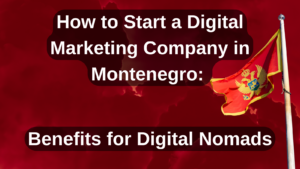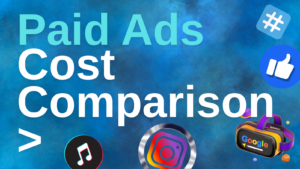Copywriting stands as a cornerstone in the edifice of marketing and advertising, a craft that blends creativity with strategic thinking to influence and persuade. This craft, which intricately weaves creativity with strategic insight, serves as the voice of brands, guiding audiences through a journey from curiosity to conviction. It is a discipline that transcends the act of writing, demanding a deep dive into the realms of human psychology, market dynamics, and linguistic precision. Through this exploration, we uncover the core of copywriting, its pivotal role in the age of digital communication, and the invaluable insights from pioneers like David Ogilvy and Claude C. Hopkins, whose wisdom continues to light the path for modern marketers.
The Quintessence of Copywriting
Copywriting, in its essence, is the art of persuasive communication. It is the deliberate orchestration of words to drive an audience towards a specific action, be it a purchase, subscription, or engagement with a brand’s message. This form of writing distinguishes itself by its singular focus on persuasion, setting it apart from other content that aims to inform, entertain, or educate. The power of copywriting lies in its ability to tap into the decision-making process, leveraging a deep understanding of the audience’s desires, fears, and motivations. It is a tool of unparalleled importance in the marketer’s toolkit, capable of transforming passive readers into active participants in a brand’s narrative.
Within marketing, where each word carries intentional weight and every message forms a connection to the consumer’s heart, copywriting emerges as the master builder of engagement. It is not merely about selling a product or service but about forging connections that resonate on a personal level, crafting narratives that echo the audience’s own thoughts and aspirations. This exploration into the essence and impact of copywriting reveals not just the mechanics of effective communication but the artistry that lies at the heart of captivating and converting audiences in the digital era.
Why Copywriting Holds Paramount Importance
Consumers today wade through a vast ocean of digital messages, each competing for their notice. Amid this constant barrage, the capacity to not just capture attention but to hold it and forge a meaningful connection becomes not just valuable, but essential. This is where the power of copywriting shines brightest. Through the strategic use of language, it distinguishes messages in a crowded marketplace, ensuring that a brand’s voice is not only heard but also felt.
Copywriting serves as a critical bridge between brands and consumers, facilitating a dialogue that extends beyond mere transactions. It’s about crafting messages that resonate on a personal level, speaking directly to the needs, desires, and challenges of the audience. This connection is the foundation upon which trust is built, transforming passive observers into active participants and loyal advocates for the brand.
Effective copywriting transcends the act of selling; it’s an investment in the brand’s narrative and identity. A well-crafted copy does more than drive sales—it embeds the brand in the consumer’s lifestyle and value system, fostering a sense of loyalty that can weather the challenges of an ever-evolving market. In essence, copywriting is not just a tool for achieving immediate business objectives; it’s a strategic asset that shapes the brand’s future, ensuring its relevance, resonance, and success in the digital age.
Lessons from the Legends
The history of advertising is adorned with luminaries whose innovations and insights have indelibly marked the fabric of copywriting. Among these, David Ogilvy and Claude C. Hopkins stand as colossi, their methodologies and philosophies continuing to influence the craft of copywriting profoundly.
David Ogilvy: The Architect of Modern Advertising
David Ogilvy, often hailed as the father of advertising, mastered the delicate balance between artistic flair and methodical precision. His philosophy was rooted in an unwavering commitment to research and an intimate understanding of the consumer psyche. Ogilvy’s assertion, “The consumer isn’t a moron; she’s your wife,” was not just a witty quip but a fundamental principle that guided his approach to copywriting. This perspective championed the idea of approaching the audience with respect and empathy, recognizing the sophistication and discernment of the everyday consumer. Ogilvy’s legacy is not merely in the campaigns he created but in his holistic vision of advertising as a force that could educate, engage, and elevate both the brand and the consumer. His insistence on clear, concise, and compelling copy remains a cornerstone of effective brand communication, emphasizing that the essence of a great advertisement is not in its complexity but in its clarity and connection with the audience.
Claude C. Hopkins: The Pioneer of Scientific Advertising
Claude C. Hopkins, another titan of the advertising world, brought a revolutionary perspective to the industry with his advocacy for scientific advertising. Hopkins’ approach was groundbreaking, insisting on the rigorous testing and measurement of advertising effectiveness. He posited that every component of an advertisement, no matter how minor it might seem, should undergo scrutiny to gauge its impact on the campaign’s overall success. This philosophy underscored the importance of empirical evidence and data in crafting advertising strategies, a concept that has become increasingly relevant in today’s data-driven marketing landscape. Hopkins’ emphasis on understanding human behavior and leveraging this insight to develop resonant and action-driving copy laid the groundwork for modern marketing analytics. His work illuminates the path for advertisers, showing that the key to compelling copy lies in a deep, data-informed understanding of the target audience’s motivations and behaviors.
Integrating Timeless Wisdom in Contemporary Copywriting
The teachings of Ogilvy and Hopkins offer invaluable lessons for today’s copywriters and marketers. In an era where consumers are inundated with digital content, the principles of clear communication, audience respect, rigorous testing, and data analysis are more pertinent than ever. By integrating these timeless insights with modern technologies and platforms, copywriters can create content that not only captures attention but also fosters genuine connections and drives meaningful actions. The legacies of these advertising legends continue to inspire and guide, reminding us that at the heart of effective copywriting lies a profound understanding of the human experience, articulated with empathy, precision, and respect.
Crafting Copy That Converts – Strategies for Success
Achieving success in copywriting demands more than a flair for language; it requires a strategic approach, grounded in a deep understanding of the audience and the application of proven techniques. The art of creating compelling copy that converts readers into customers involves several key strategies, each contributing to the overall effectiveness of the message.
Deep Audience Insight
The foundation of impactful copy lies in a comprehensive understanding of the target audience. This involves delving into their needs, desires, and challenges, gathering insights that inform the crafting of resonant messages. By aligning the copy with the audience’s specific pain points and aspirations, copywriters can significantly increase the relevance and appeal of their content. This tailored approach ensures that the message not only reaches the intended recipients but also speaks to them in a language they understand and appreciate.
Clarity and Precision
In the realm of copywriting, clarity reigns supreme. The most effective copy is characterized by its simplicity and directness, stripping away any ambiguity to deliver the core message in an easily digestible format. This clarity of communication ensures that the value proposition is immediately apparent to the reader, facilitating a quicker and more decisive response. By prioritizing conciseness and focusing on the essential message, copywriters can effectively guide the audience towards the desired action without unnecessary distractions.
Leveraging Emotional Connections
Emotion is a powerful driver of human behavior, and copy that taps into this can significantly amplify its persuasive power. By crafting messages that resonate on an emotional level—whether by invoking joy, excitement, fear, or a sense of belonging—copywriters can create a deeper connection with the audience. This emotional engagement not only makes the copy more memorable but also more likely to motivate action, as decisions are often influenced by how a message makes the reader feel.
The Art of Storytelling
Storytelling is a timeless technique that brings copy to life, transforming it from mere text to a narrative that captivates the audience. Through storytelling, copywriters can weave a compelling tale that not only entertains but also embeds the brand or product within a context that the audience can relate to. This narrative approach enriches the copy, making it more engaging and persuasive by providing readers with a scenario in which they can envision themselves. The power of storytelling lies in its ability to transport the audience, allowing them to experience the benefits of a product or service through the lens of a story.
Continuous Testing and Optimization
Echoing the principles championed by Claude C. Hopkins, the continuous testing and optimization of copy are crucial for maximizing its effectiveness. By experimenting with different headlines, calls to action, and message framing, copywriters can identify the most impactful elements of their copy. This iterative process, informed by performance data, allows for the fine-tuning of messages to better resonate with the target audience. Through rigorous testing and a commitment to optimization, copywriters can ensure that their copy not only captures attention but also converts it into tangible results.
Wrapping It Up
Copywriting remains an indispensable skill in the marketer’s toolkit, blending creativity with strategic insight to influence and persuade. Drawing lessons from legends like David Ogilvy and Claude C. Hopkins, today’s copywriters can craft messages that not only capture attention but also drive action. As the digital landscape continues to evolve, the principles of effective copywriting—understanding the audience, clarity, emotional appeal, storytelling, and continuous optimization—remain as relevant as ever.





